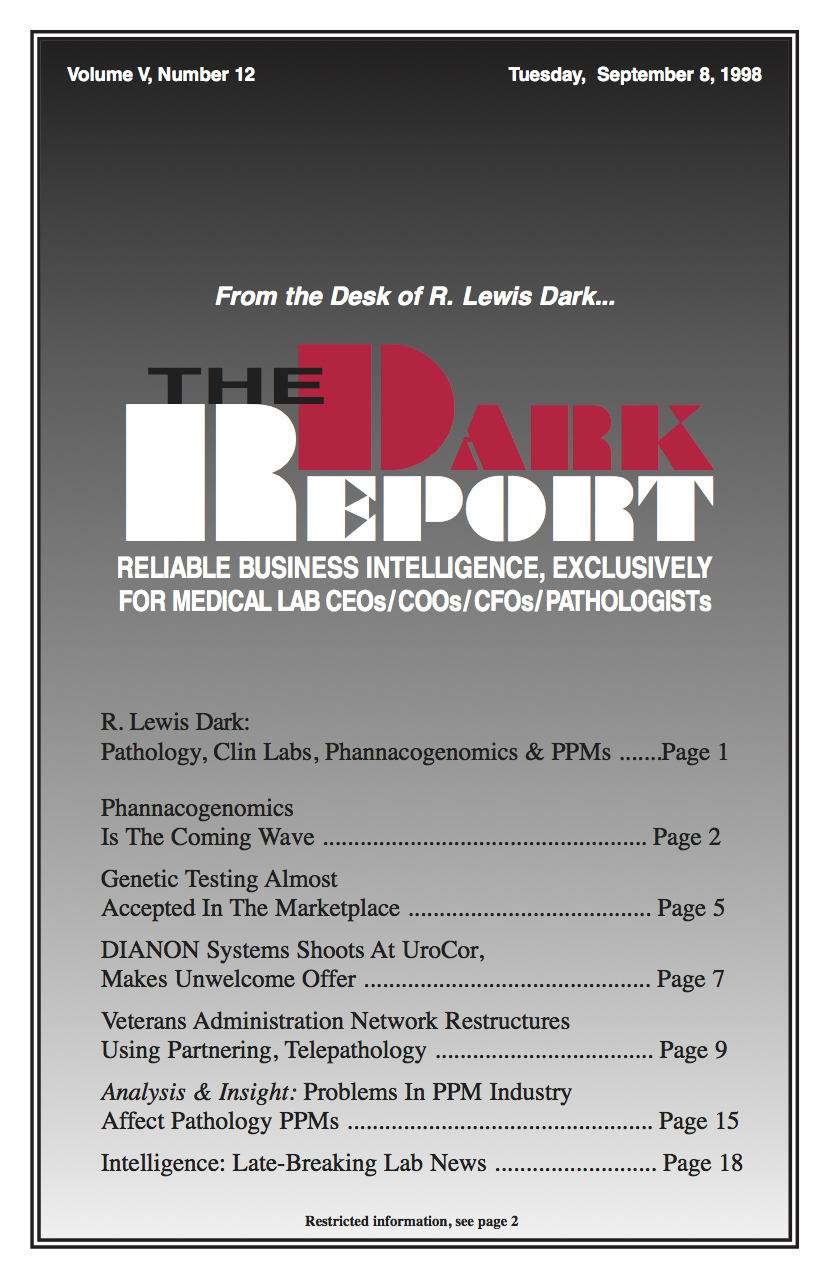DURING 1998, THE FINANCIAL WOES of many physician practice management (PPM) companies caught healthcare experts, investors, and financial experts by surprise. Problems with the PPM industry could not come at a worse time for the pathology profession. At the very moment that several pathology-based PPMs are bidding strong prices for selected pathology practices, the PPM …
Problems In PPM lndustry Affect Pathology Practices Read More »
To access this post, you must purchase The Dark Report.


